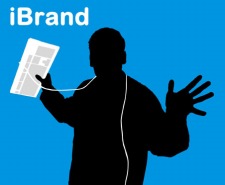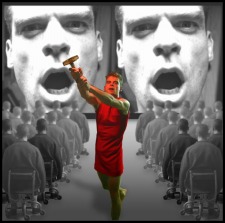261 Broad Street
Windsor, CT 06095
(860) 285-0172
support@invisiblegold.com
Your Website Should Be Easy to Edit
Windsor, CT 06095
(860) 285-0172
support@invisiblegold.com
Your Website Should Be Easy to Edit
iBrand: - Creating Excitement In The Perception Economy
THE WALMART EFFECT - The Cost of Production DropsHundreds of years ago, the local blacksmith had to keep a fire going all night. Tools were made by hand, and there was no such thing as a disposable lighter. You probably knew the man that made your ax.The industrial age caused a rapid change. Skilled craftsmen were replaced by nameless workers in factories. People in South America started calling machetes "Collins" because they all had it stamped on the blade (a factory in rural Connecticut). Economy of scale pushed factories to get bigger and shipping to get cheaper. Next, computers enabled companies like Walmart to squeeze every last cent out of a production line. We can buy pickles for pennies more than the cost to produce them. (Thus putting local shops out of business.) Businesses compete by using ever cheaper methods of production usually by outsourcing to other countries. On the other hand, we're losing the real human connection. You probably don't know the person behind the cash register (if there even is someone). We research purchases online and take advice from strangers. Forget branding, are you surprised that people are paid to "write opinions" to post online? |
iPods and Aftershave: The Business Of Perception Heats Up
Is there any question that a Dell or HP could be just as good? It all comes down to the image. We buy the Apple because it makes us "feel" something. Besides, you can plug it into your BMW... Or, maybe it goes back to the famous "1984" superbowl commercial. It aired only once - but has been celebrated by a fanatical following. In a cinematic scene borrowed from George Orwell's novel, a woman boldly throws a hammer through a giant video screen. The "status quo is shattered" and dull gray gives way to a colorful Apple logo. (Ask a Macintosh owner if they can name the director...) |
HOW DOES A SMALL BUSINESS COMPETE?While competing with corporations can be tough, the first step is to accept the fact that your business has a "brand" too. All you need to do is align that image with your unique strengths and make it memorable.1) Identify and communicate your deeper cause. What got you excited to start the business? You still need to provide a good service, but set out to make change in the world and people will be happy to help. 2) Write down qualities that your business represents. Include things such as products offered, style, stores/office atmosphere, the way employees dress, value and economy, attitude toward customers, etc. Focus on the feelings generated. 3) Make a list of all experiences people have with your brand and make sure they match the image you want to present. This includes everything including business cards, phone message, the sign out front, the car you drive, the clothes you wear, the brochures you hand out, etc. 4) Be an enthusiast and use the business to get people together. For example: a liquor store can run wine tastings, an art gallery has openings, a bike shop has group rides, etc. Don't just wait for people to come buy your product. Help them meet a bigger need. 5) Find ways to reach out and pull people back. A website and brochures are important. However, fliers, newsletters, mailings, and seeing people in person keeps the momentum going. Lastly, remember that clients ultimately choose whether or not they want to do business with us. Treat them as friends, do your best to see that their needs get met, and stay flexible to keep your head above water. Rear Admiral Grace Hopper John Waiveris writes articles about online and small business marketing. For more information visit www.invisiblegold.com or call (860) 285-0172. "Your Website Should Be Easy To Edit" Copyright 2004 - Invisible Gold, LLC |


